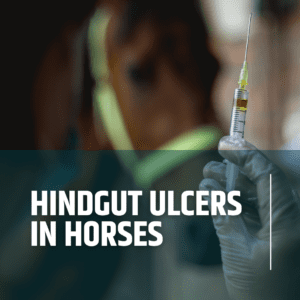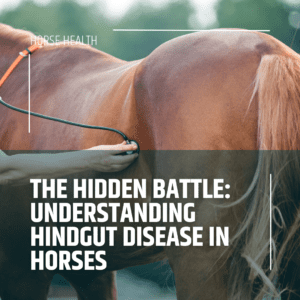

Ben Nedas
Chief Commercial Officer
Why February is ideal to add EquiNectar to your horse’s routine
01
Introduction
As the calendar turns to February, horse owners and caretakers must prepare for the upcoming challenge of spring grass, which, although not immediate, is imminent. The significance of this preparation period cannot be overstated, especially concerning the nutritional management of horses. The arrival of spring grass, rich in fructans and typically expected in March or later, marks a critical phase in equine dietary management. Fructans, essentially structural polymers of fructose, are found in abundance in new grass and represent a considerable challenge to the equine digestive system.
Horses consuming large amounts of fructans can experience detrimental shifts in their hindgut's microbial environment. This is due to the horse’s inability to efficiently break down fructans in the small intestine, leading to their fermentation in the hindgut. Such fermentation can result in an overproduction of lactic acid, lowering the pH and causing hindgut acidosis. This condition, if not addressed, can be a precursor to more severe health issues, including the risk of laminitis, a serious and potentially debilitating condition.
Milder symptoms which cause discomfort, often present to varying degrees as changes in demeanour, displaying challenging behaviours, sensitivity to touch and irregular movement (restriction or lameness).
Understanding the timeline and preparing in advance, particularly by considering dietary adjustments and supplements like EquiNectar in February, is crucial for mitigating the potential risks associated with the transition to spring grazing.
02
Risks of fructan overload
Fructans are not efficiently digested in the horse's small intestine, leading to their fermentation in the hindgut. This fermentation process is mediated by specific microbial populations that, when fed excessive fructans, produce an overabundance of lactic acid. The resultant drop in pH levels—a condition known as hindgut acidosis—disrupts the delicate microbial balance crucial for healthy digestive function.
Key consequences of this disruption include:
- Increased Gut Permeability: Acidic conditions compromise the integrity of the gut lining, facilitating the translocation of toxins into the bloodstream.
- Decreased Fibre Digestion: Acidification inhibits the activity of fibre-digesting (good) bacteria, impairing nutrient absorption and potentially leading to nutritional deficiencies.
- Laminitis Risk: Perhaps most concerning is the established link between hindgut acidosis and laminitis, a debilitating and often life-threatening condition characterised by inflammation of the sensitive laminae within the hoof.
- Temperament Change: Fizzy, erratic and grumpy behaviour, partly due to discomfort and partly due to an overloading of the fructose pathway. For more information, read: Why does eating grass make my horse irritable?
03
Why start in February?
Initiating EquiNectar supplementation in February is a strategic measure, rooted in the understanding that the equine gut microbiome requires a period of 4-6 weeks to optimally adjust to dietary changes. This adjustment period is crucial as it aligns with the anticipated arrival of spring grass, which is typically high in fructans. Our research indicates that this preparatory phase can significantly mitigate the risks associated with the sudden introduction of fructan-rich spring grass into the diet.
Fructans, not readily digested in the horse's small intestine, can ferment in the hindgut if consumed in large amounts, leading to an overproduction of lactic acid and, consequently, a decrease in pH levels. This process, known as hindgut acidosis, can disrupt the microbial balance within the gut, posing a risk to the horse's health. EquiNectar, with its comprehensive blend of digestive enzymes, including fructanases, plays a pivotal role in breaking down these complex carbohydrates, thereby reducing the likelihood of fructan overload reaching the hindgut.
Empirical evidence supporting the benefits of preemptive supplementation comes from a study conducted at Redwings Horse Sanctuary. The findings revealed that horses receiving EquiNectar before the transition to spring grass demonstrated a more stable gut microbiome than those in the control group, who did not receive the supplement (read the study: . This stability is indicative of a reduced impact from the dietary shift, highlighting the effectiveness of EquiNectar in facilitating a smoother adaptation to fructan-rich diets.
Therefore, starting EquiNectar in February offers a buffer period, allowing the gut microbiome to adapt and stabilise. This proactive approach ensures that by the time spring grass becomes prevalent, the horse's digestive system is better equipped to handle the increase in fructans, minimising the risk of digestive disturbances and promoting overall gut health.
04
Hindgut acidosis is not merely a transient discomfort but a serious condition that can precipitate a cascade of health issues. The rapid proliferation of lactic acid-producing bacteria and the consequent decline in pH can lead to systemic inflammation, endotoxemia, and colic, alongside the increased risk of laminitis. These conditions not only jeopardise the horse's immediate well-being but can also have long-term consequences for their health and performance.
05
Is EquiNectar useful for my horse?
In the context of these risks, EquiNectar serves as a valuable dietary tool. Its enzyme-rich formula, including fructanases, targets the root cause of fructan overload by facilitating the breakdown of these complex carbohydrates before they can overwhelm the hindgut. While EquiNectar is not a panacea, it represents a scientifically grounded intervention to support the digestive health of horses transitioning to spring pastures.
06
Conclusion
The arrival of spring, with its fructan-rich grass, signals a critical period for horse owners. Understanding the risks associated with fructan overload and the pathology of hindgut acidosis is essential for effective equine health management. Early intervention with EquiNectar, rooted in empirical research (view our Scientific Research), offers a proactive measure to support the equine digestive system, helping to mitigate the challenges posed by the seasonal transition in forage.
ABOUT EQUINECTAR
Description
EquiNectar® is a natural feed supplement, that is scientifically proven to:
- Re-balance your horse’s gut bacteria
- Help your horse maximise benefits from its feed
- Improve your horse’s condition
More information
EquiNectar® is produced by Tharos Ltd in the UK. It is a natural source of digestive enzymes and contains only the following ingredients:
- Our patented enzyme rich malt extract
- Medium chain triglycerides (from coconut oil)
- Potassium sorbate
For more details of the enzymes within EquiNectar® take a look at the ingredients and enzymes page.
How to feed
Simply add EquiNectar® to your horse's daily feed, using the Feeding Rate chart to determine the correct amount.
For detailed instructions about how to introduce EquiNectar, please read the comprehensive Feeding Guide page.





